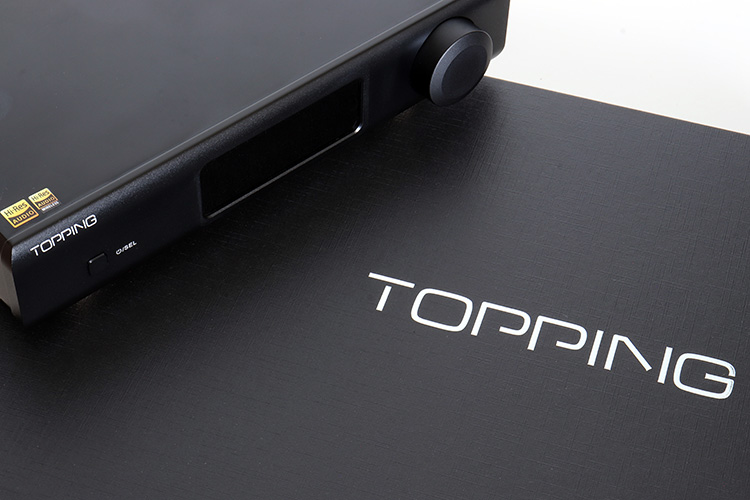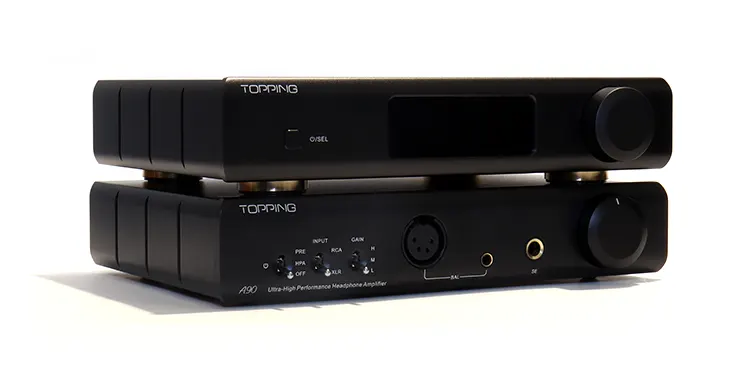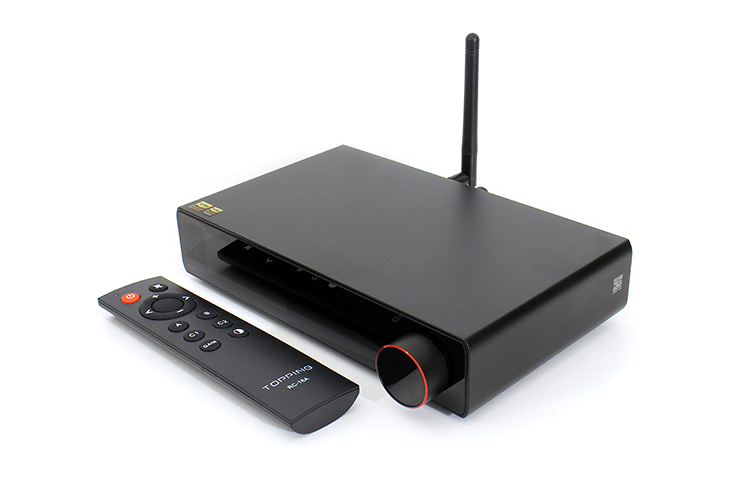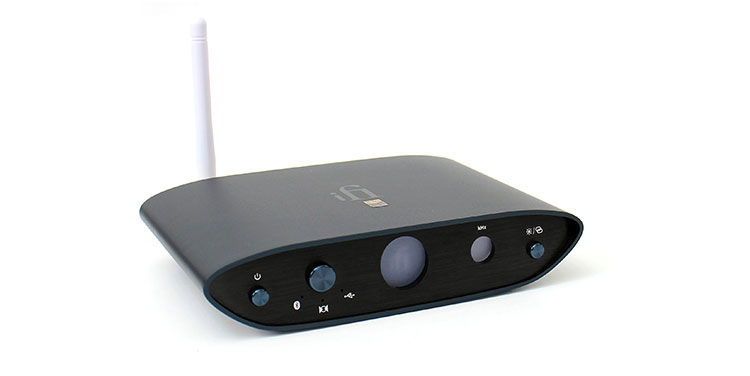Synergy
Plug & Play
The D90 III Sabre DAC is compatible with both Windows and MAC and I would presume Linux platforms though I do not have a means to confirm Linux.
You don’t need a driver if you run Windows 10 or 11, verified. The D90 III Sabre works as a plug-and-play model, but there are instructions around on how to set up a working ASIO driver in case you want to go that route.
However, in this case, the built-in Windows driver does well sonically and seems stable.
Amplifier Pairing
The A90 and the A90 discrete are a perfect match for the D90 III Sabre but that is not a limitation and you could use another house brand amplifier.
I paired the D90 III Sabre successfully with a couple of Topping amplifiers including the L70 and also managed to pair it with amplifiers like the iFi Audio ZEN CAN. I was also able to tap this DAC into the amplification section of the EF600 with a slight overall improvement.
The D90 III Sabre seems to bring out the best in any amplifier and increases its staging accuracy most of the time, and it also seems linear enough to be a good ruler to judge an amplifier’s tonal quality.
Select Comparisons
All the comparisons to the D90 III Sabre were completed using HIFIMAN’s Arya Organic headphones with custom-balanced OFC cables. All the playback was done through the Topping A90 amplifier.
All the units in this comparison were feeding the amplifier through their XLR outputs except for the iFi Audio ZEN One Signature DAC. In its case, a 4.4mm to an XLR cable was used. An attempt to match volume levels and gain voltages was also performed where applicable.
Topping E70
Technical
The E70 comes from a line of components that reside right below the D90 III Sabre. They rely on similar components but are downscaled into a smaller chassis.
Topping went with a single ES9028PRO on the E70. It also employs an XMOS XU316 microcontroller and the same Bluetooth 5.1 implementation based on Qualcomm’s 5100 chipset.
One missing ingredient here is the omitted MQA capability but if you dabble mostly in PCM format files, the E70 should suffice and can handle files of up to 32-bit 768kHz bitrates.
Design
The E70 comes from the same manufacturer, and at first glance, you wouldn’t think so because they look entirely different. IO is similar but it excludes the IIS port. Other than that, they both work identically.
The front panel is a sheet of tempered glass but it has no touch functions, only a power on and off switch. If full touch controls had been implemented it would have been a game changer.
While the unit is off, the front panel is all black and if it wasn’t for the red color accent of the volume knob, the E70’s look and appearance would have been entirely monochrome.
Performance
I was curious as to how the Topping baby brother, the E70 would compare to its upper-class sibling and could stack up to the D90 III Sabre, so I pulled it out and did a side-by-side comparison. Surprisingly, it did well although it runs older hardware.
The ES9028PRO has been around for a while and Topping did squeeze lots of performance from this single-chip implementation but it’s almost clinical in sound signature.
It has a clean output with low noise and the timbre is accurate but lacks the focus and dynamic range of the D90 III Sabre.
iFi Audio ZEN One Signature DAC
Technical
The ZEN One Signature DAC has a list of components that are very familiar to the iFi Audio lineup and I believe that practice makes perfect. It shows in the overall quality of the construction and sonic performance.
The ZEN One uses the iFi familiar Burr-Brown DAC section, a 2000MIPS XMOS processor, a Femto clock, and a generous list of top-notch components that produce a pleasantly smooth sonic performance that also adds no noise of its own.
One common characteristic of both these models is that both use a Qualcomm 5100 series 5.1 Bluetooth section that operates the same list of codecs so you can also expect the same performance level sonically.
Design
The ZEN One Signature DAC from iFi Audio is a one-of-a-kind model and it stands out because it’s the smallest unit within this comparison. It sports a rounded Trapezoid shape constructed in brushed metal and anodized in blue.
The ZEN One DAC IO favors the 4.4mm Pentaconn over XLR connections but still manages to also include a set of RCA outputs that are rated at 2 volts and 4 volts on the 4.4mm connection respectively.
The selectable input section consists of an optical, SPDIF, and a USB type B that can handle PCM, and DSD plus it can also hardware render MQA. The Bluetooth receiver is another way to tap into the ZEN One Signature input section.
The Zen One can be used as a media center hub successfully but is limited to close field operation since there’s no remote control capability and no volume control either.
Upfront, you’ll only get a power button, the input selector plus a Bluetooth pairing button alongside a glowing iFi symbol and a glowing round panel that usually shows the running format depending on what firmware you’re running.
Performance
One notices a low-end punchier aspect when listening to the One Signature and the trait can be attributed to the warm characteristics of the Burr-Brown DAC section inside the One Signature.
The fixed, overall volume or gain seems a couple of decibels higher than on the D90 III Sabre set on 0 decibels so that might bring forth that aspect.
Dynamic range differences are true to the specifications since it seems the D90 III Sabre can produce a higher amount physically as well as on paper.
The ZEN One Signature also has a touch of warmth within the vocal range that’s not present in the D90 sound signature. The D90 III Sabre seems the more linear of the two when it comes to vocals.
Staging is done almost equally when it comes to overall size but the D90 III Sabre seems to produce sharper edges around each aura of every element within the recording you’re listening to which gives the sense of improved layering.
HIFIMAN EF600
Technical
The HIFIMAN EF600 is a powerhouse tower of audio at modest retail. The tower is a combo unit but it has facilities for accessing the internal DAC section which is what I did in this case out of curiosity and to see how an R2R Himalaya DAC section compares to the D90 III Sabre’s dual ES9039SPRO equipped DAC section.
The large upright tower uses a large copper wire wounded Toroidal transformer that not only supplies a massive amount of power to the unit but also creates a heavy and low center of gravity to give the vertical cabinet some desktop stability.
Design
Aesthetically, the cabinet reeks of old-world quality from the era of thick front panels and heavy cabinets. It’s heavy and large indeed and you’d better make room on top of your desktop, especially if you want to double up on units and use the EF600 as a standalone DAC.
HIFIMAN did a collab with Bauhaust to come up with the overall cabinet design on this model which doubles up as a headphone stand and is made from a thick, long slab of brushed aluminum and folded into a U-shape.
The large polymer centerpiece also channels out any heat produced within the EF600 using heat’s natural tendency to rise, so HIFIMAN incorporated vents on the top and bottom of the unit.
Performance
The HIFIMAN EF600 Himalaya DAC section sounds exquisitely musical, wide, and airy. The high frequencies are rather relaxed and almost reared in presentation giving off a warm character that is pleasing since the overall sonic presentation produces no sharp edges around the high frequencies.
The EF600 produces plenty of height in the vocal area but seems narrower in projection. The width is on par with what the dual ES9039SPRO-equipped D90 III Sabre model produces but it’s not very noticeable.
There’s a peculiar characteristic that I found and it’s that if you use the internal DAC section separately of the EF600 then the OS setting sounds best which contradicts my preference which is the NOS setting when I use the internal amplification.
Either way, Both these DACs perform on a similar level with a small variance in the reduced high-frequency presence, warmth versus pure detail production, and AIO versus separate components.
Our Verdict
The Topping D90 III Sabre is an excellent desktop DAC with a transparent sound signature in its digital-to-analog conversion process making it a great centerpiece due to its flexible feature set and preamp capability.
It has most of the features you will need. The only thing to be aware of is that the system locks during playback with menu access only through the remote control but sonically it makes up for that.
In conclusion, the Topping D90 III Sabre is an excellent addition to the Topping product lineup and it will reside on my desktop for a while until something better comes along. Topping gets two thumbs up on this one from me.
Topping D90 III Sabre Technical Specifications
- THD-N @A weight: RCA, ≤00006% @1kHz / XLR- ≤0.000045% @ 1kHz
- THD-@No-wt 90kBw: RCA, 0.0003@ @20 to 20kHz / XLR, 0.001% @ 20 to 20kHz
- SNR A weighted: RCA, 129db @ 1kHz / XLR, 135db @ 1kHz
- Dynamic range A weighted: RCA, 129db @ 1kHz / XLR, 135db @ 1kHz
- Frequency response: 20 to 20kHz ±1db / 20 to 40kHz ±0.3db
- Output level: RCA, 2.1Vrms @ 0dbfs ( 4V mode) / 2.6 @ 0dbfs ( 5V mode)
- Output level: XLR, 4.2Vrms @ 0dbfs ( 4V mode) / 5.2 @ 0dbfs ( 5V mode)
- Noise A weighted: 1.1µVrms
- Channel crosstalk: RCA, -133db @ 1khz / XLR, 149db @ 1kHz
- Channel balance: 0.3db
- Output impedance: RCA, 50Ω / XLR, 100Ω







